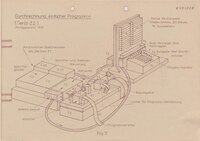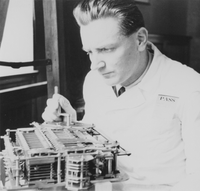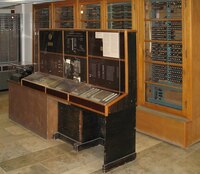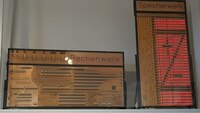Konrad Zuse builds the Z3
|
12th May 1941 On 12th May 1941, Konrad Zuse completes construction of the Z3, the world's first working programmable, fully automatic digital computing machine. Like the Z1 and Z2, Zuse built the Z3 in the living room of his parents' Berlin apartment. The Z3 contained more than 2000 relays. The arithmetic unit could add, subtract, multiply and divide, and the memory could store sixty-four 22-bit numbers. The machine was housed in three cabinets, and read programs from a punched film. On 12 May 1941, the Z3 was presented to an audience of the Deutsche Versuchsanstalt für Luftfahrt in Berlin-Adlershof. The Z3 was destroyed by the bombing of Berlin in December 1943, during World War II. A replica of the Z3, constructed during the 1960s, can be found in the Deutsches Technikmuseum Berlin. On June 16, 1941 Zuse submitted a patent application for the Z3 (Z26476 IXb/42m), but due to the war, the patent application was not processed. Zuse again submitted the patent in 1950 (Z000391 IXb/42m), but this time the patent was not granted because of opposition from other parties, including IBM. Legal proceedings finally concluded in 1967, when the Federal Patent Court rejected Zuse's claim, declaring it lacked inventiveness. Related information: Image:
Related Items in the Collection:
|
Click on the Images For Detail
|














